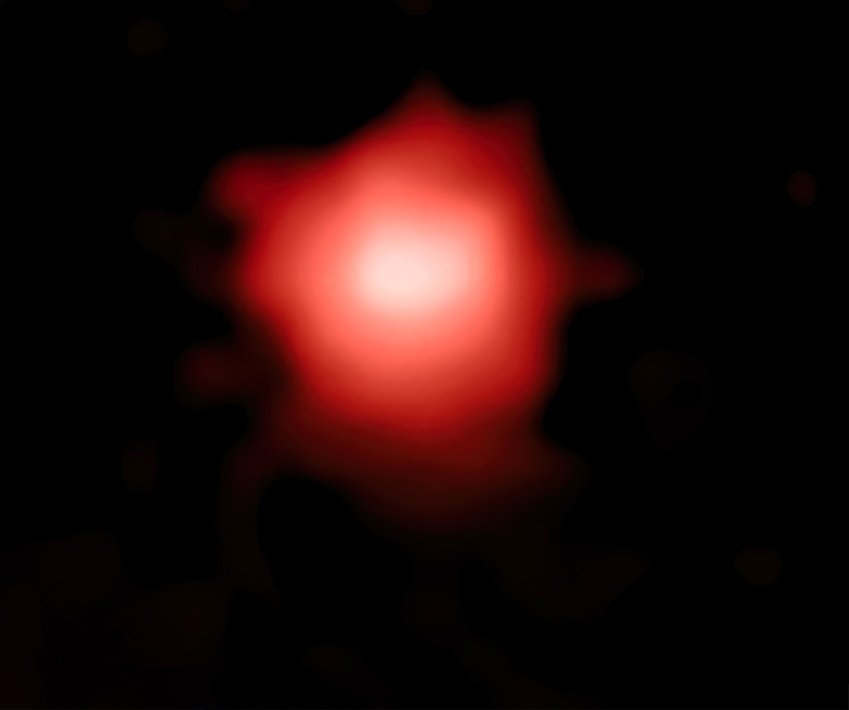At a Glance
- NASA’s James Webb Space Telescope (JWST) has revealed luminous, very red objects in the early universe, challenging traditional theories of galaxy and supermassive black hole evolution.
- The discovery, led by Penn State University researchers using JWST’s NIRSpec instrument as part of the RUBIES survey, identified these objects 600–800 million years after the Big Bang when the universe was only 5% of its current age.
- Spectral measurements showed these objects contain “old” stars, hundreds of millions of years old, which is unexpected for such a young universe.
- The objects also harbor supermassive black holes 100 to 1,000 times more massive than the one in the Milky Way, contradicting existing models of synchronized galaxy and black hole growth over billions of years.
- The discovery has prompted scientists to reconsider established cosmological paradigms. JWST provides crucial insights into the universe’s early evolution and potentially reshapes our understanding of the cosmos.
A groundbreaking discovery by NASA‘s James Webb Space Telescope (JWST) has shaken up the scientific community’s understanding of the origins and evolution of galaxies and supermassive black holes. Recently confirmed findings from the JWST have unveiled luminous, very red objects in the early universe, presenting a significant departure from conventional theories.
Led by a team of researchers from Penn State University, the discovery was made using the NIRSpec instrument aboard the JWST as part of the RUBIES survey. These mysterious objects were pinpointed in the early universe, a mere 600–800 million years after the Big Bang when the universe was still in its infancy, only 5% of its current age. The team’s findings were published in the Astrophysical Journal Letters, marking a pivotal moment in astrophysical research.
The team’s analysis of spectral measurements, which gauge the intensity of different wavelengths of light emitted by these objects, revealed astonishing revelations. Surprisingly, they detected signatures of “old” stars within these objects, which were hundreds of millions of years old, starkly contrasting to what was expected in such a young universe.
Moreover, the researchers were astounded to find evidence of massive supermassive black holes within these objects, estimated to be 100 to 1,000 times more massive than the supermassive black hole in our Milky Way. This discovery challenges existing models of galaxy growth and supermassive black hole formation, which suggest a synchronized growth over billions of years.
Bingjie Wang, a postdoctoral scholar at Penn State and lead author of the paper, expressed the team’s surprise, stating, “We have confirmed that these appear to be packed with ancient stars—hundreds of millions of years old—in a universe that is only 600–800 million years old. Remarkably, these objects hold the record for the earliest signatures of old starlight.” This unexpected finding has left scientists grappling with the implications and reevaluating established cosmological paradigms.
The JWST’s ability to peer back approximately 13.5 billion years, near the universe’s inception, has provided invaluable insights into these enigmatic objects. As researchers delve deeper into the mysteries surrounding these early galaxies, they are poised to unlock further secrets that could reshape our understanding of the cosmos.
References
- Berard, A. & Pennsylvania State University. (2024, June 28). Tiny bright objects discovered at dawn of universe baffle scientists. Phys.Org; Pennsylvania State University. https://phys.org/news/2024-06-tiny-bright-dawn-universe-baffle.html
- Wang, B., Leja, J., Graaff, A. de, Brammer, G. B., Weibel, A., Dokkum, P. van, Baggen, J. F. W., Suess, K. A., Greene, J. E., Bezanson, R., Cleri, N. J., Hirschmann, M., Labbé, I., Matthee, J., McConachie, I., Naidu, R. P., Nelson, E., Oesch, P. A., Setton, D. J., & Williams, C. C. (2024). RUBIES: Evolved Stellar Populations with Extended Formation Histories at z ∼ 7–8 in Candidate Massive Galaxies Identified with JWST/NIRSpec. The Astrophysical Journal Letters, 969(1), L13. https://doi.org/10.3847/2041-8213/ad55f7











